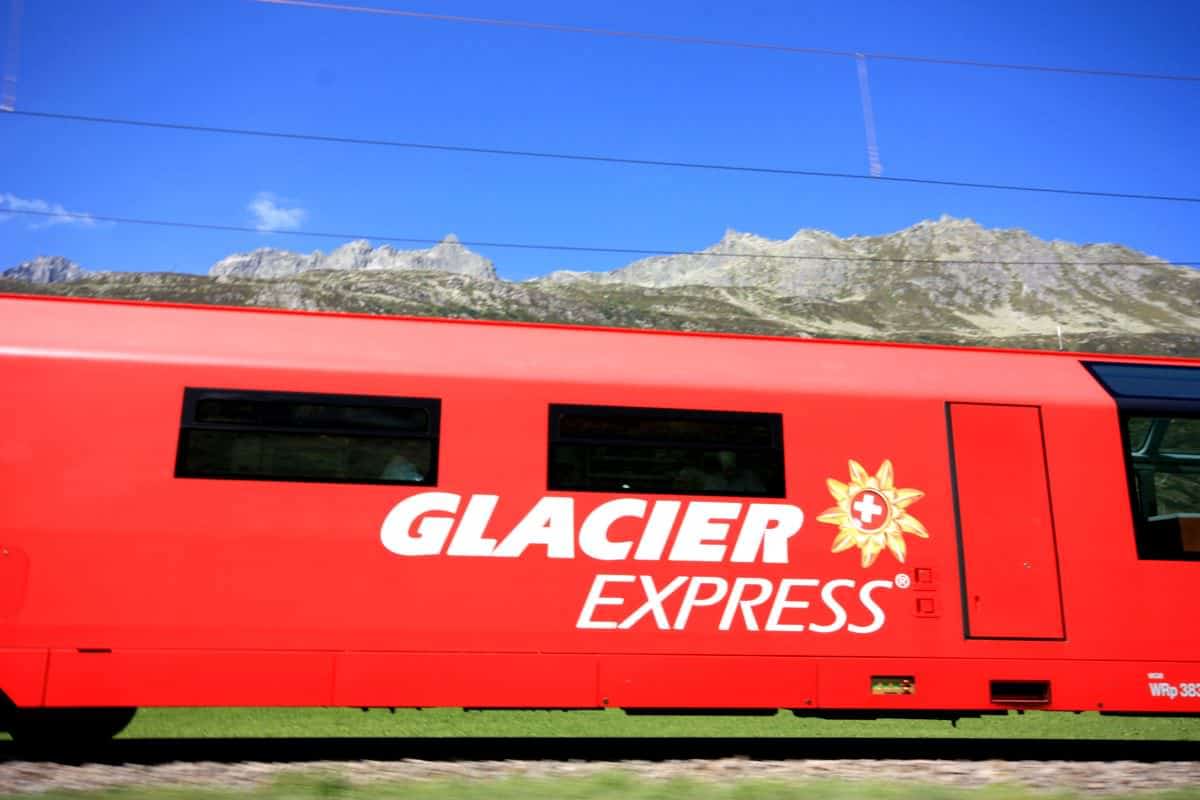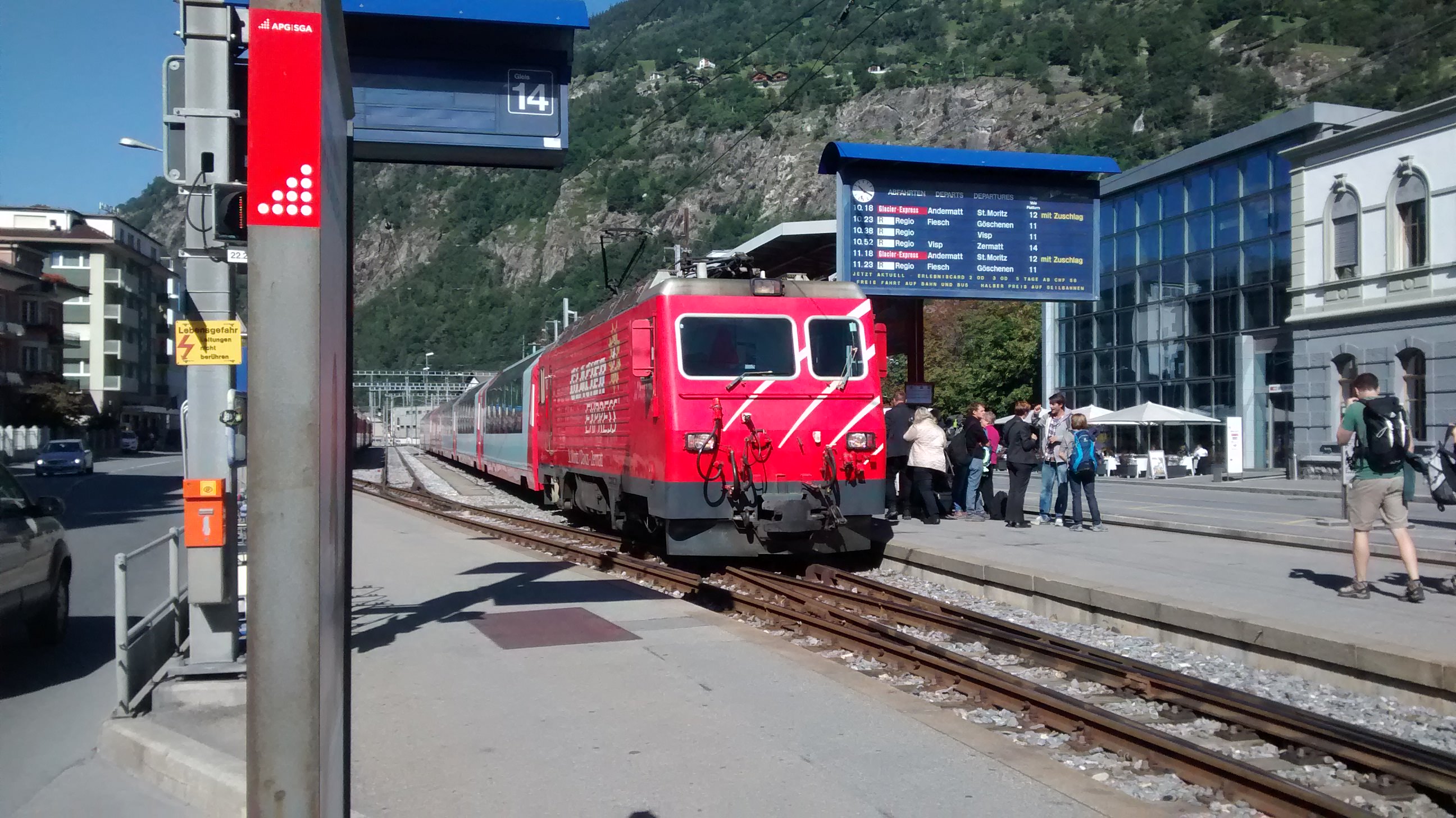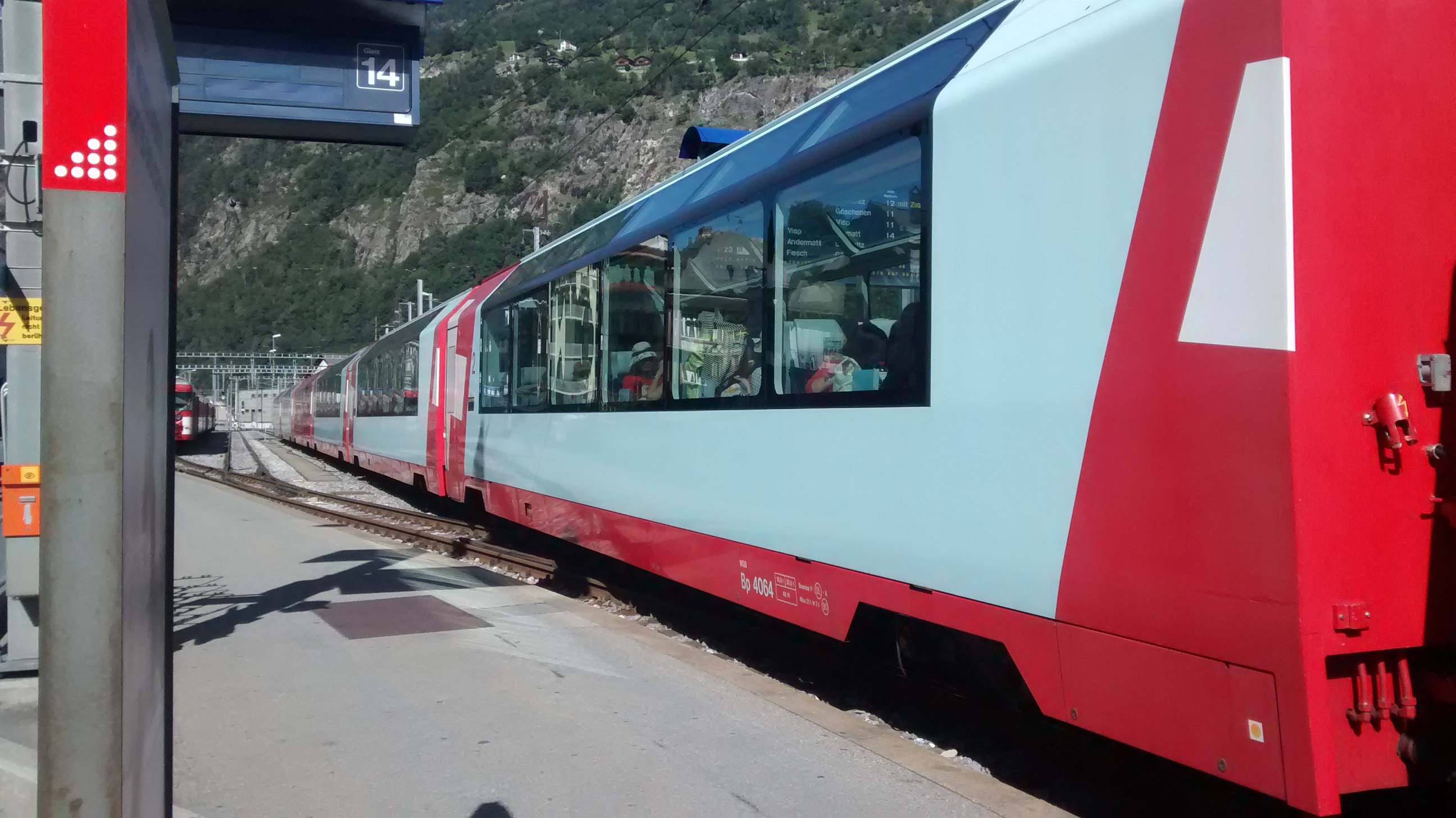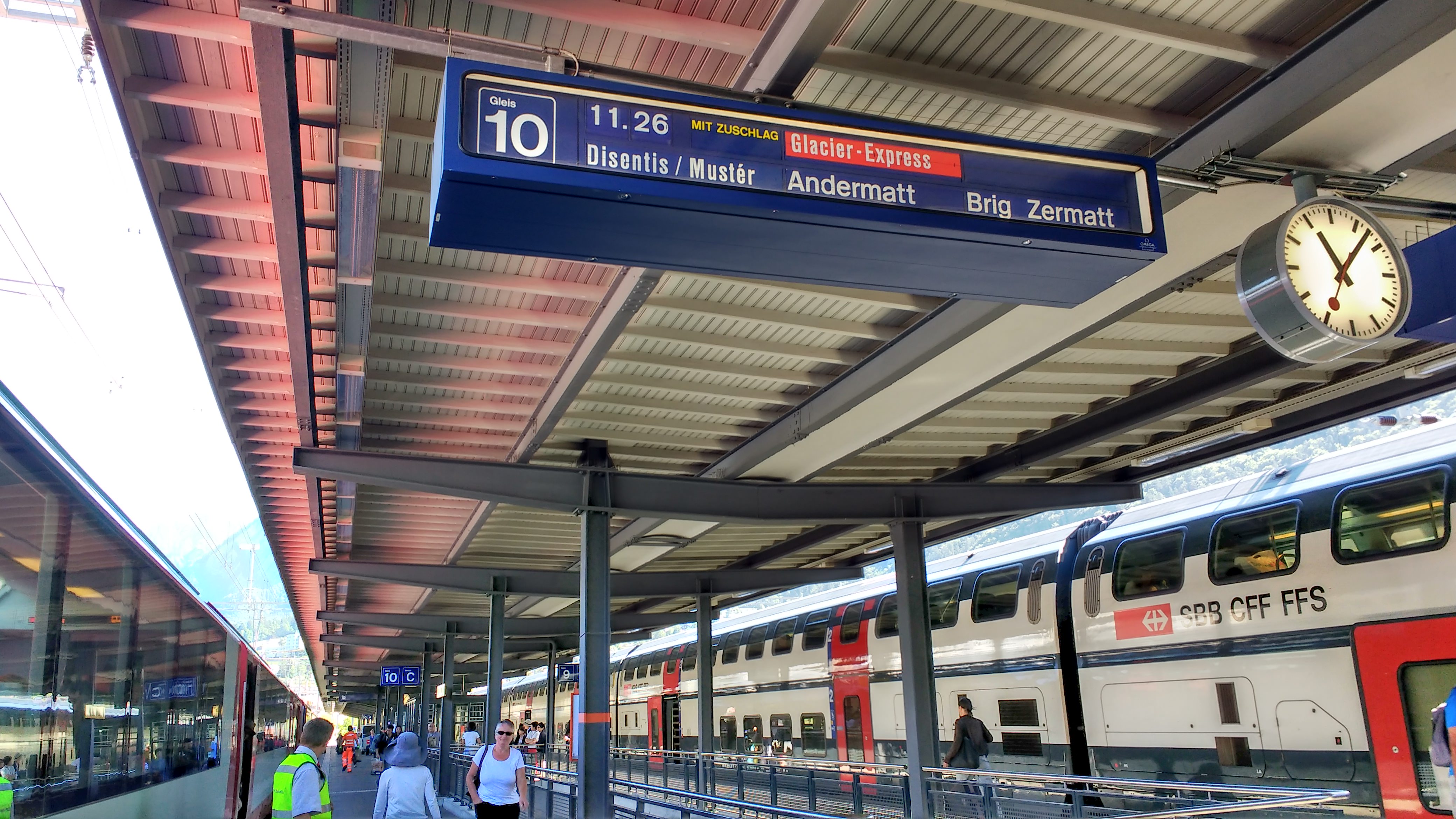The famous Swiss scenic train are something every traveller should experience at least once in his/her lifetime. The Glacier Express is a true classic of all scenic trains available. There are way too many reasons to get this train like the ones written above. The many bridges, tunnels and viaducts make this trip a wonderful adventure!
History of the Glacier Express
1889 - First line of the Rhätische Bahn (Rhaetian Railways) opens, Landquart - Kosters (to Davos from 1890)
1891 - Cog railways is opened, Visp - Zermatt
1903 - The Albula line of the Rhätische Bahn opens, Thusis - Celerina (to St. Mortiz from 1904)
1926 - The Furka Oberalp Railways opens, Brig - Disentis
1930 - On June 25th 1930, the Glacier Express runs between Zermatt and St. Moritz in summer from the first time.
1982 - The Furka basis tunnel opens, thus connecting Zermatt and St. Mortiz all year round
1993 - The first panorama trains herald a new era
2005 - 75th anniversary of the Glacier Express
2006 - New first-class and second-class panorama carriages
2008 - The "Rhaetian Railways in the Albula/Bernina Landschapes" has been included in the list of UNESCO World Heritage sites
2009 - All trains are now equipped the current panorama coaches.
The Glacier Express Train
The train contains out of 2 first class panorama wagons, 1 Servicewagen and 3 second class panorama wagons. When you bought a seat reservation (compulsory, read more below) you will be given earphones (to listen to the given information at scenic places or old local music), folders, a magazine and are being served on our seat. When it gets warm inside and the sun shining at these heights, there's nothing to worry about, all carriages are air conditioned.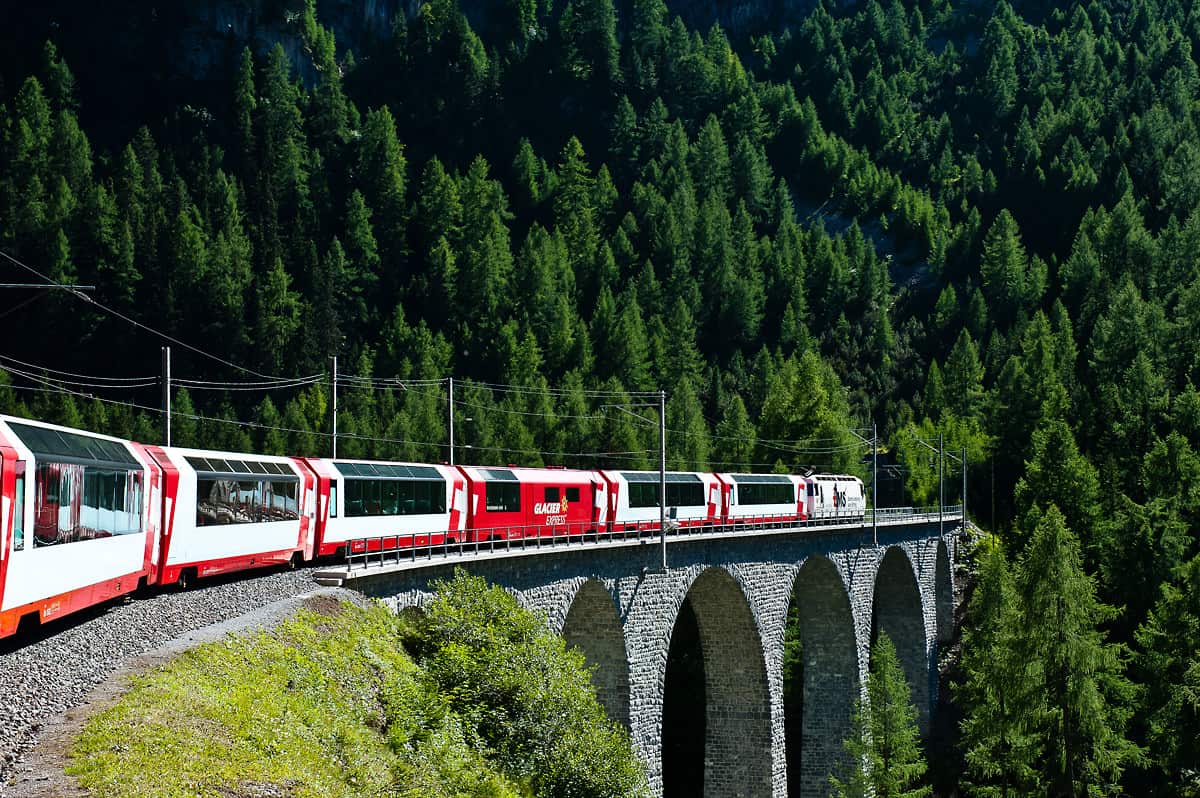
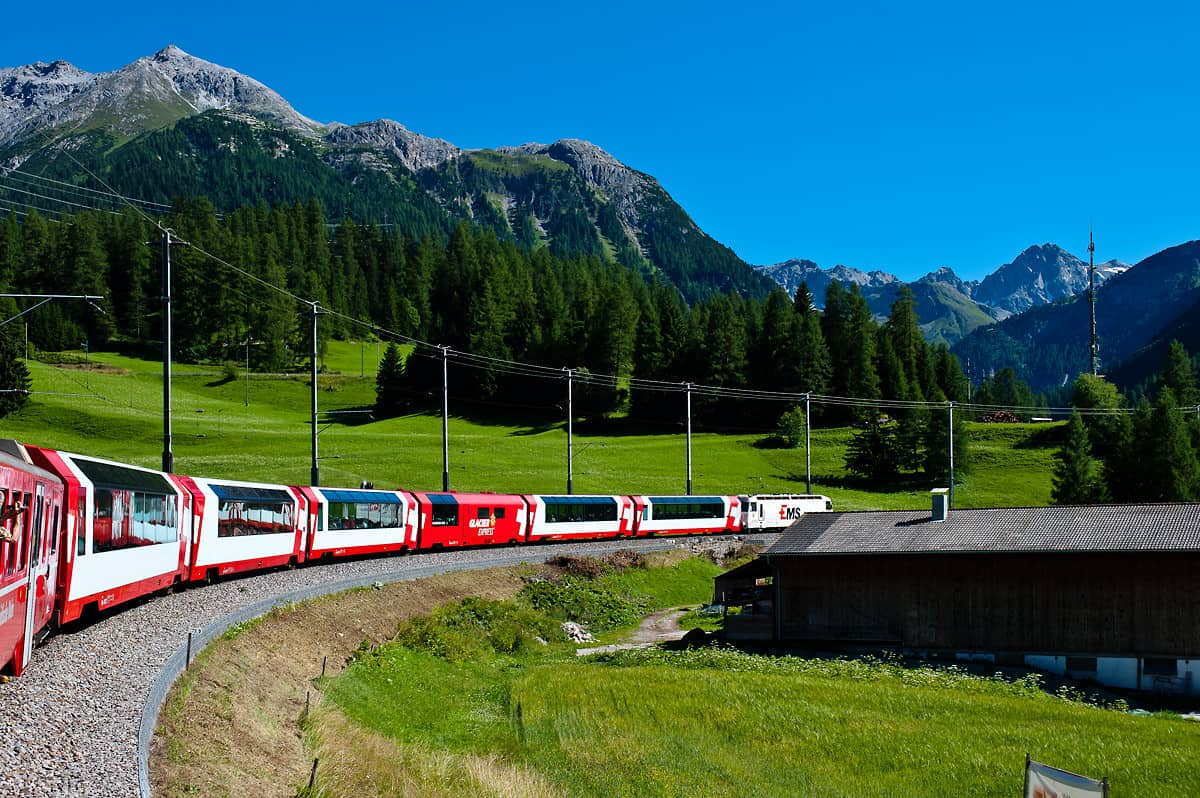
Brig to Andermatt
The train crosses the river Rhone a few minutes after departure from Brig, and continue its way east into the Upper Rhone valley. Again, the V-shaped valley is very narrow sometimes. At end of the valley, in Oberwald, the train has reached an altitude of 1366 m. Since 1925, a railroad across the Furka Pass leads from Oberwald to Realp. The mountains caused quite some engineering difficulties to this stretch and they wasn't able to cross it in winter. In 1982, a tunnel to Realp was opened to bypass the pass, making the train service much more reliable. The old pass railway was closed at that time, but it was reopened in 2010 for tourist steam trains. The Glacier Express and all other local trains keep using the tunnel anyway. From Realp, a fairly flat stretch leads to Andermatt.
Andermatt to Chur
Andermatt, at 1436 m, is where the Oberalp Pass begins. The Glacier Express winds its way upwards to 2034 m, the highest point of this journey, with the help of the cog wheel. This is where the river Rhine rises. The bare landscape up here is usually covered in snow from November to April and the road is closed during that period. Next up is a long descend along the Rhine valley to Chur, at 585 m. Chur is the lowest point of the route. The landscape looks very dramatic in the Rhine gorge between Ilanz and Reichenau, where the river carved deep into the white rocks. This region is also referred to as the 'Swiss Grand Canyon'. After Reichenau, the train will reach Chur, the capital of the canton of Graubünden and the largest town along the route and as well the oldest town in Switzerland. Chur has a history of settlement spanning approximately 5000 years.
Chur to St. Moritz
The final section overlaps with the first section of the Bernina Express. The Glacier Express changes direction and heads for Reichenau again. There it bends to the south, towards Thusis and Tiefencastel. This Domleschg valley is know for its many ruins and castles. The Glacier Express continues south through a mostly narrow valley, crossing the spectacular curved Landwasser viaduct just before it reaches Filisur. At a height of 65m and a length of 142m the Landwasser viaduct has become an icon of the Glacier Express. After Filisur, several spiral loops help it gain height until it reaches the entrance of the Albula tunnel at Preda, at 1789 m. This section of the route is very interesting to explore on foot as well. The most spectacular section of the Glacier Express lies between Preda and Bergün. Six viaducts, 5 spiral tunnels make it possible to make your way up the 400 meter height difference. This part of the route has been on the UNESCO list since 2008. The Albula tunnel (which is being renewed since 2016) leads to the high Upper Engadine valley. The Glacier Express will reach its destination St. Moritz after another 20 minutes.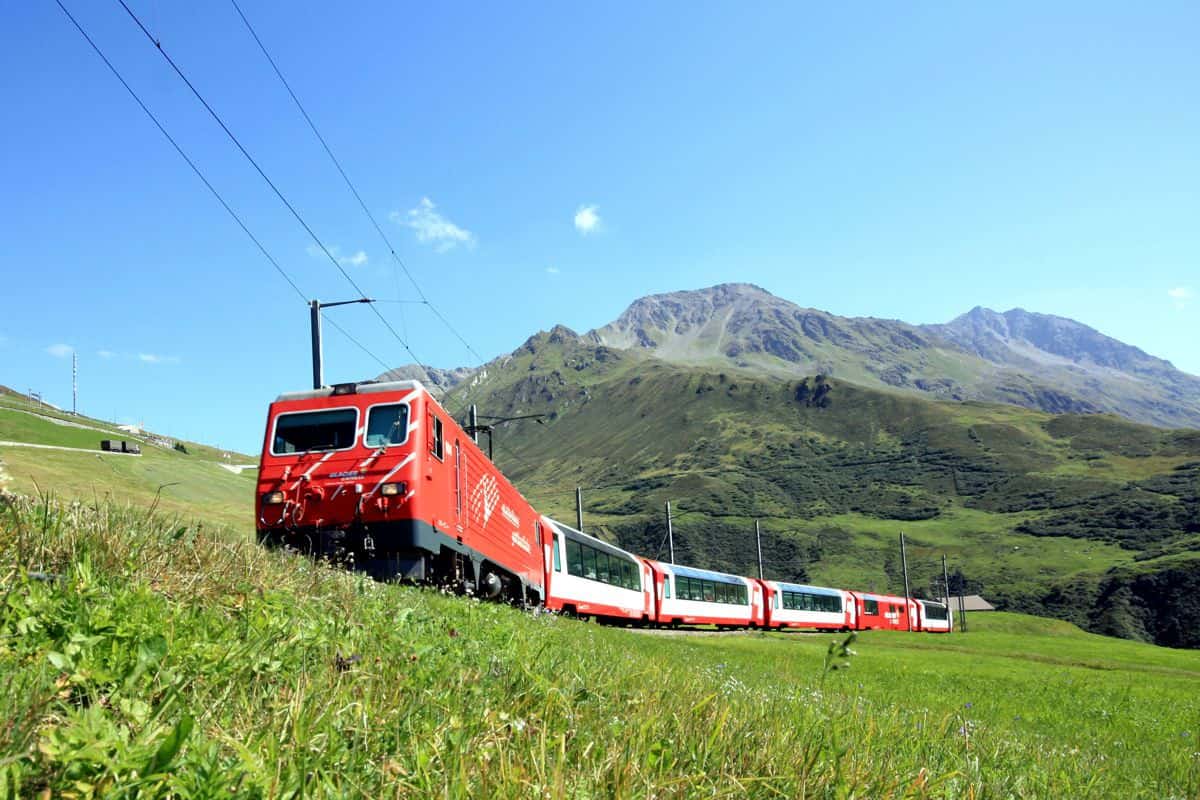
'Le Restaurant'
Besides the beautiful landscape you are about to see is there one more important point to look at. The Glacier Express (when you make the whole tour or just around noon) offers an excellent cuisine. Most people just choose for the plate of the day what can be pre-booked and are served in large quantities by the waitresses. If you are just hopped on, or did not choose this extended lunch there different meals as well.
Personally I found this 'compulsory' lunch way overrated for my as traveller. Most meals are way to expensive for most travellers and since everyone takes something and the waitresses find it strange when you order nothing I took the cheapest lunch. Of course it is not required. All of this together leads to an train route for the more wealthier among us.
The Menu card. Most chosen lunch: Three course meal, Salad or soup, main course, cheese or dessert (43 CHF). Daily Special, Main course (30 CHF). Other small meals between 20 and 30 CHF.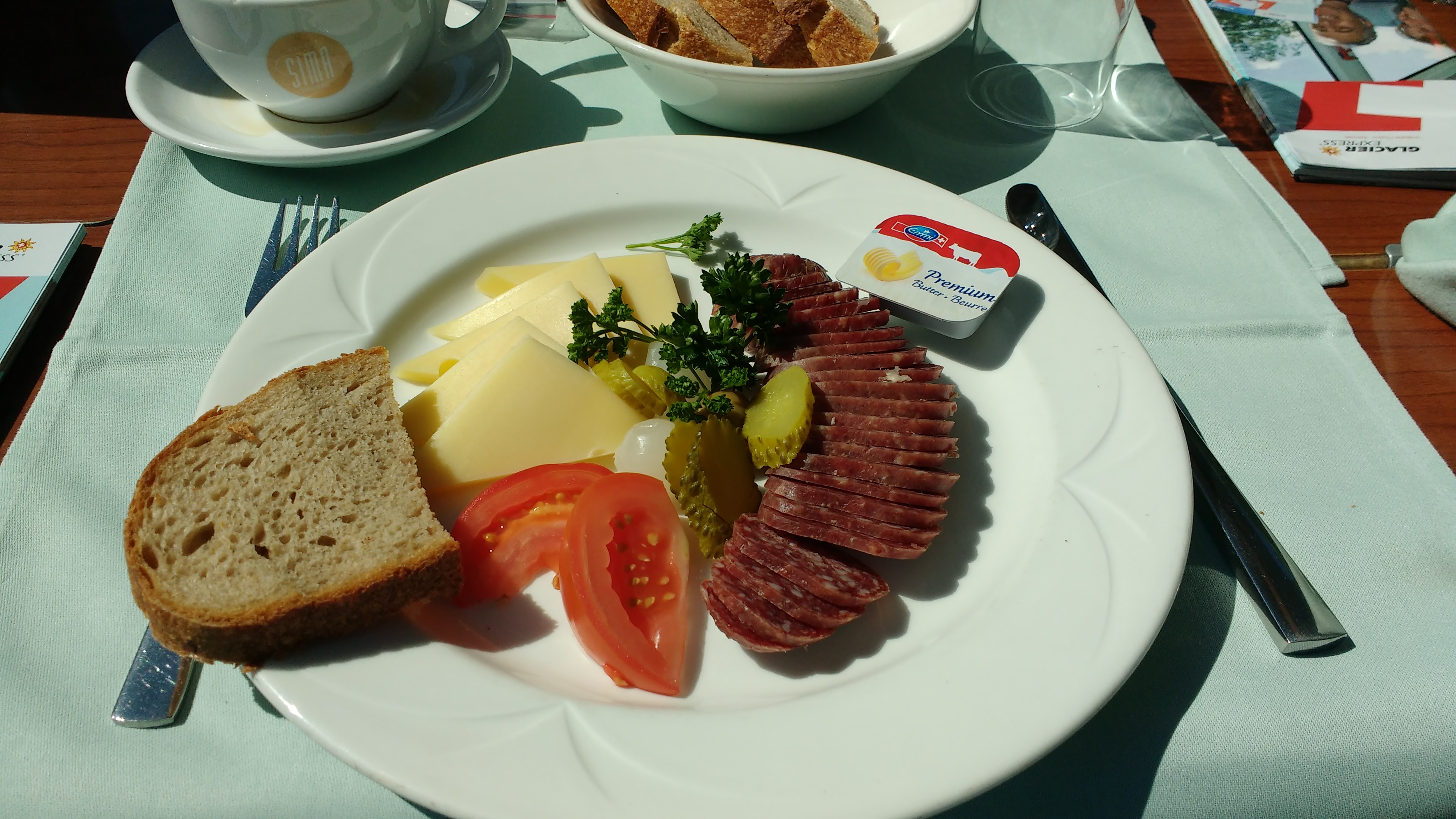
Accommodations
I myself took a overnight in Hotel Preda Kulm. The little village of Preda has only 7 inhabitants, 1 hotel and 1 station. This hotel is on a perfect spot if you are traveling along this route! You just don't want to stay in St. Moritz since it is way over priced and I searched for something on this route. The station of Preda is not included in the list of stops of the Glacier Express. Fortunately the carriages of the Glacier Express are just attached to the local train, wich do stop here. You can just open the doors of the Glacier Express and when it is not, just walk around the train in Bergün, the next Glacier Express official stop.
Zermatt is an overpriced village as well. I can recommend to search for something around Brig or Visp. I can recommend the wellnessHostel4000 (yes strange combination) in Saas Fee as well (postbus from Visp).
Prices and Interrail
Train tickets
The Swiss rail tour operator "Railtour" offers interessting packages which make your trip very easy, if you do not want to plan everything by yourself. Have a look at their offers. Otherwhise you will get the tickets directly on the website of Glacier Express.
Interrail
The route Disentis - Brig - Zermatt is run by the Matterhorn Gotthard Bahn (MGB) and is since 2017 completely included with Interrail. The 2nd part of the route, Dsientis - Chur - St. Moritz, was already included in Interrail.
Glacier Express does requires the additional seat reservation of 33 CHF in summer or 13 CHF in winter.
Alternatives
- Tickets for the Bernina Express between Chur and Tirano cost 60 CHF one way in second class. There’s also a compulsory seat reservation fee of 14 CHF in summer or 10 CHF in winter. You can also pay an extra 24 CHF for their bus connection if you want to transfer on to Lugano. So a summer ticket will cost a minimum of 74 CHF. Swiss Passes, Interail and Eurail passes are all valid on this route.
- It’s easy to do the Bernina Express route on normal local trains, and although you don’t get the panoramic carriages, instead you can open the train windows which is much better for taking photos. It does involve a couple of changes along the way though, but Swiss trains are very reliable. First change is at Samedan, which is near St Moritz (what you will bypass via this route). Then it’s a short seven minute journey to Pontresina where you change onto the train to Tirano.
- As with the Bernina Express, there are also local trains running all the way along the route of the Glacier Express. But it does involve a few more changes. The whole journey is only 20 minutes slower than the Glacier Express. You need to do four changes on the way though at Brig, Andermatt, Distenis and Reichenau-Tamins (just outside Chur). When you book a ticket make sure to put ‘via Andermatt’ when you search as otherwise you’ll get taken on the quicker but less scenic route which goes via Zürich instead.
- The Gornergrat starting off in Zermatt isn't included in Interrail, but way more spectacular than all other rides!
- Jungfrau Railways is an other example of steep railways in the region of Interlaken.
Timetable
Only as example! Use the planner for more detailed information!
| Zermatt - St. Moritz | Train number | 900 | 902 | 904 |
| Zermatt | dep | 07.52 | 08.52 | 09.52 |
| Brig | dep | 09.18 | 10.18 | 11.18 |
| Andermatt | dep | 10.54 | 11.54 | 12.54 |
| Disentis/M. | dep | 12.28 | 13.28 | 14.28 |
| Chur | dep | 13.35 | 14.35 | 15.35 |
| Thusis | dep | 14.28 | 15.28 | 16.28 |
| Filisur | arr | 15.00 | 16.00 | 17.00 |
| St. Moritz | arr | 15.58 | 16.58 | 17.58 |
| St. Moritz - Zermatt | Train number | 901 | 903 | 905 |
| St. Moritz | dep | 08.02 | 09.02 | 10.02 |
| Filisur | dep | 09.01 | 10.01 | 11.01 |
| Thusis | dep | 09.33 | 10.33 | 11.33 |
| Chur | dep | 10.26 | 11.26 | 12.26 |
| Disentis/M. | dep | 11.37 | 12.37 | 13.37 |
| Andermatt | dep | 13.08 | 14.08 | 15.08 |
| Brig | arr | 14.43 | 15.43 | 16.43 |
| Zermatt | arr | 16.10 | 17.10 | 18.10 |
| The winter timetable consists only out of the trains 902 and 903 from 11 dec - 12 may 2017. | ||||
Review
The scenery was incredibly beautiful, but those wo like to photograph from out of the train, you will have some problems. All carriages of the Glacier Express have a lot of windows but they can't be opened. And with the sun shining into the glass most pictures from inside are just not worth it. Another unfortunate fact is that you can't travel without a seat reservation. That this reservation is not cheap is one, but you may find yourself stuck with your back in the direction of the train and facing a couple of strangers in front of you for 8 hours. There are regular trains services on all lines as well who do not need any reservation. Regular trains do not offer the panoramic windows and same level of comfort, but on the other hand you are free to hop on and off, take pictures out of the window and can see the same landscape just as well! The Glacier Express is meanly meant for the more wealthy people traveling trough Switzerland. It is just a normal Swiss train but with a better service on board.
Now the question is: Is the Glacier Express really worth your time? You will have to decide it your self. I'm glad I made this trip on board the Glacier Express, but the next time I would choose for a normal train.
Update: January 2017
👁 27262



